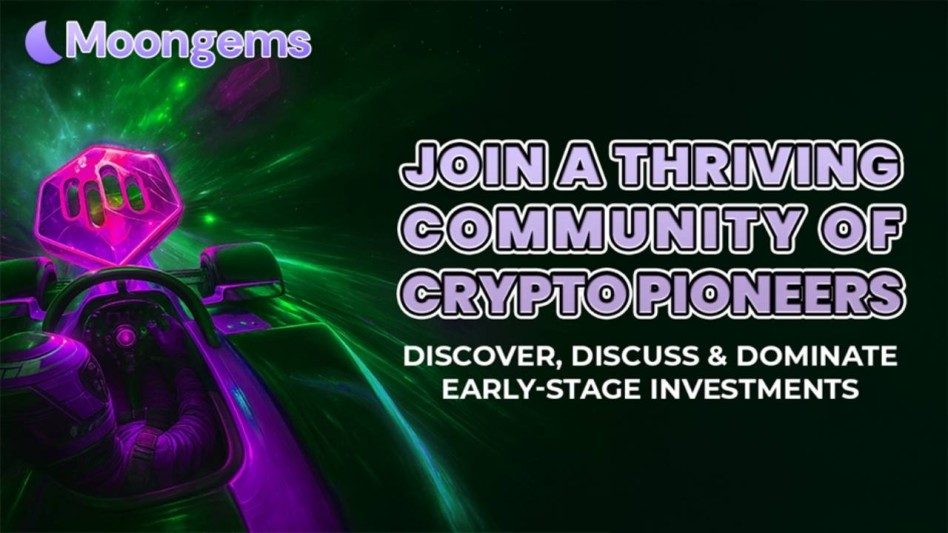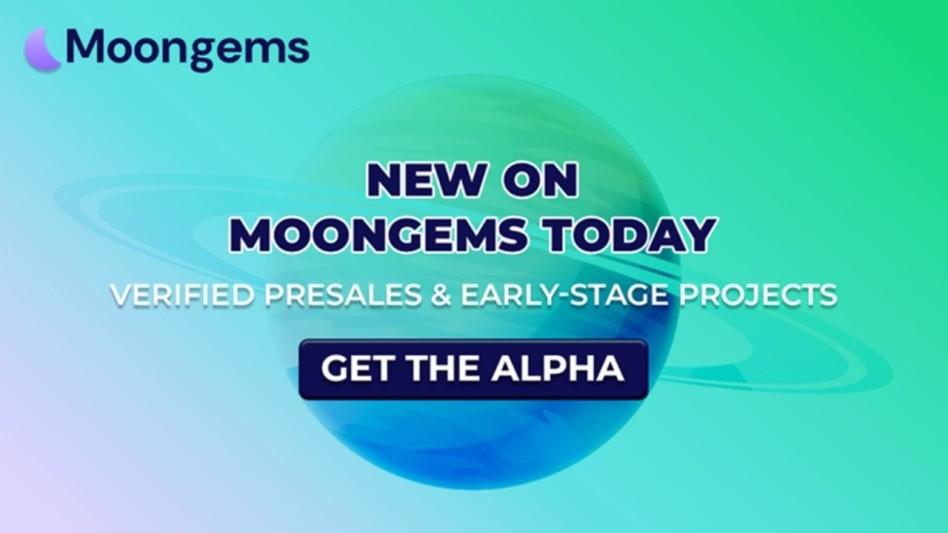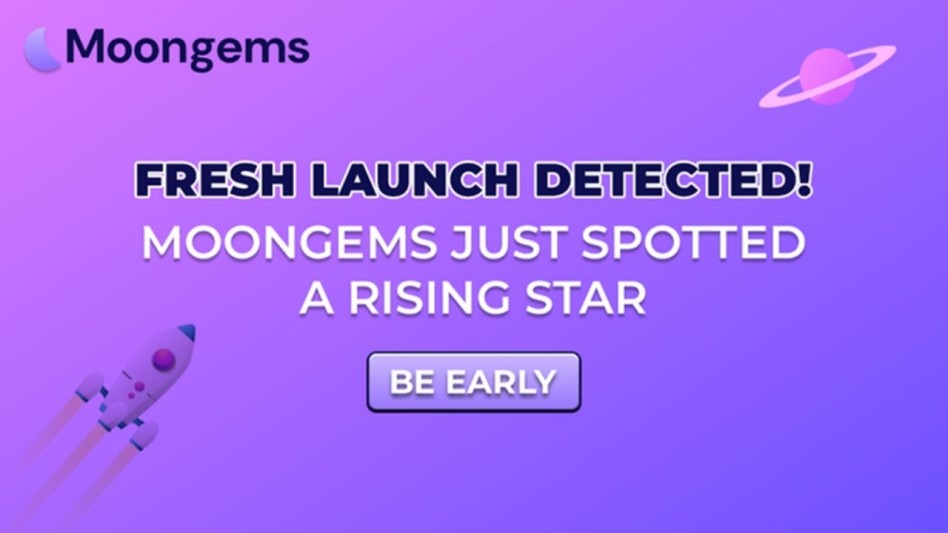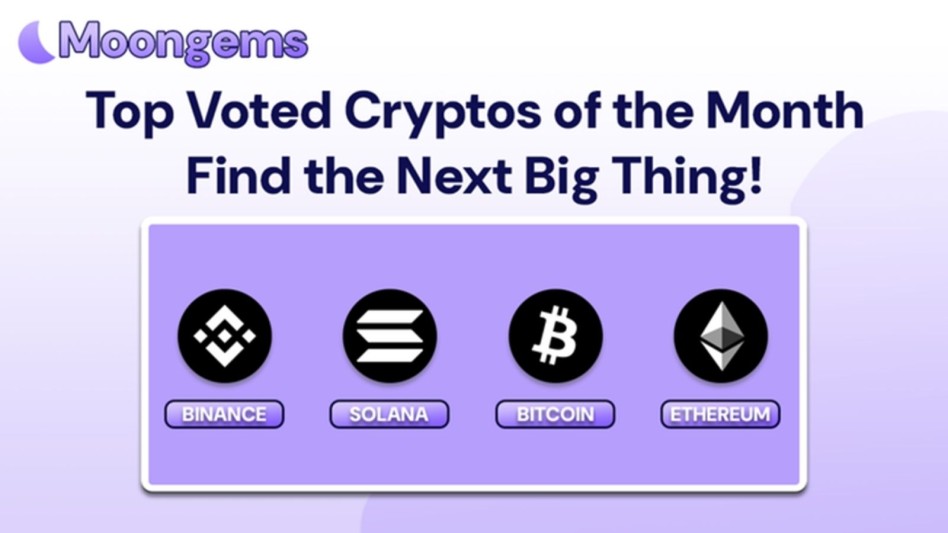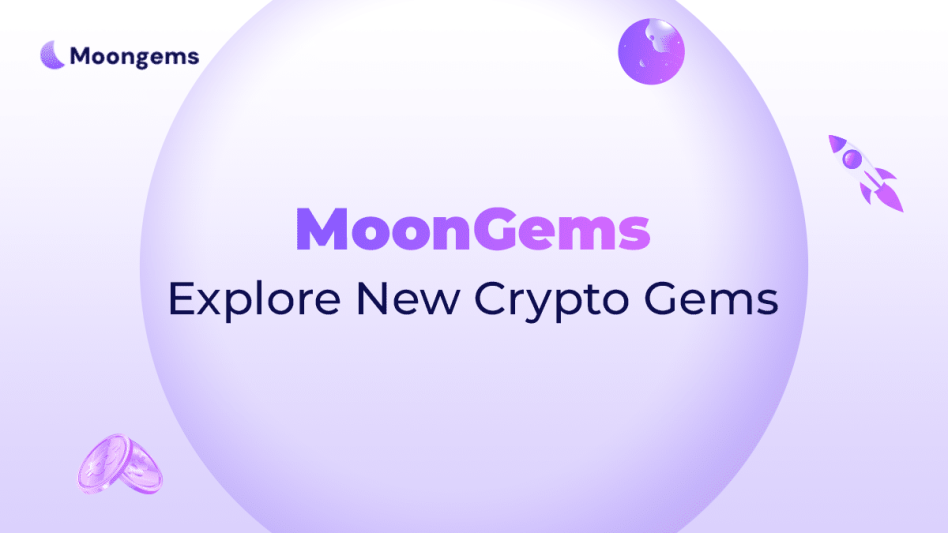Author: Jawad Hussain – Crypto Analyst & Web3 Researcher | 9+ years tracking presales, IDOs, and token launches. Follow him on X (formerly known as Twitter) and LinkedIn.
The cryptocurrency market has always celebrated innovation and boldness, but 2025 has ushered in an exciting trend: microcap presales from small, independent teams without venture capital (VC) support. These so-called “underdog projects” are quickly becoming some of the most attractive investment opportunities in the industry, often outperforming their heavily funded counterparts by large margins. For many investors, this is not just a shift in investment strategy but a philosophical return to crypto’s roots — decentralization, fairness, and community-driven growth.
Unlike VC-backed projects that often come with pre-mined allocations, insider discounts, and aggressive marketing budgets, microcap presales typically depend on grassroots efforts and organic momentum. Their teams are lean, agile, and directly accountable to their communities. Instead of focusing on raising tens of millions before launch, these projects focus on delivering value quickly and proving themselves in the open market. For early-stage investors, this model creates a unique opportunity: fairer token allocations, lower initial valuations, and communities that feel invested in the project’s long-term success.
Data collected by MoonGems in Q1 2025 shows that microcap presales without VC backing have produced an average return on investment (ROI) 3.2 times higher than VC-backed presales within six months of launch. Investors are realizing that heavy funding does not necessarily translate into sustainable success. In fact, many high-profile, VC-backed launches experience early “pump and dump” cycles due to aggressive vesting schedules and insider-driven exits, while microcap teams often foster more loyal communities that help sustain organic growth.
This article explores why underdog presales are flourishing, what key factors make them unique, and how investors can identify the next breakout microcap token before it hits the mainstream. It will also feature real-world case studies of microcap success stories, provide actionable investment frameworks, and offer risk mitigation strategies for navigating this exciting but often volatile sector.
Why Microcap Teams Without VC Backing Deliver Outsized Gains
The success of microcap crypto presales without venture capital support may seem counterintuitive in a market often dominated by well-funded, heavily marketed projects. Yet, these underdogs are thriving because they embody the original spirit of decentralization and fairness that drew so many early adopters to cryptocurrency. In 2025, retail investors are increasingly skeptical of projects backed by institutional funding due to token dumping, excessive insider allocations, and centralized decision-making. This has created a fertile environment for microcap teams that rely instead on transparency, grassroots marketing, and organic growth.
1. Fair Token Distribution and Reduced Dumping Risk
One of the most compelling advantages microcap teams have over their VC-backed counterparts is fair token distribution. Venture capital investors often receive tokens at heavily discounted rates during private funding rounds, which can lead to aggressive token selling once vesting periods expire. Retail investors frequently find themselves at a disadvantage, buying in at higher prices only to see early backers cash out. Microcap projects that avoid such early funding rounds typically launch with fairer allocation models. These may include fair launches, community-driven presales, or capped individual allocations that prevent whale dominance. As a result, token price action post-launch tends to be healthier, with fewer sudden crashes caused by early exits.
2. Community-Driven Growth
Without access to multimillion-dollar marketing budgets, microcap teams are forced to rely on community support. Paradoxically, this limitation often becomes their greatest strength. By engaging directly with early supporters on platforms like Telegram, Discord, and X (formerly Twitter), these teams cultivate highly engaged and loyal communities. Grassroots campaigns, user-generated content, and word-of-mouth marketing can be far more effective at building long-term interest than paid advertisements or influencer partnerships. Community members feel a sense of ownership, becoming not just token holders but also brand ambassadors who actively promote and support the project’s growth.
3. Lower Initial Valuations with Higher Upside Potential
Microcap presales usually begin with valuations significantly lower than their VC-backed competitors. Lower valuations mean early-stage investors can acquire larger positions with relatively small amounts of capital. If the project gains traction, these tokens often experience rapid price appreciation, delivering outsized returns. For example, while a VC-backed token might already have a $50 million market cap at launch, a microcap token might debut at $2 million, leaving much more room for exponential growth. This dynamic is especially appealing to retail investors looking for opportunities to 5x, 10x, or even 50x their investments.
4. Alignment Between Founders and Investors
In VC-backed projects, founders sometimes prioritize satisfying early investors and meeting institutional growth targets over delivering community value. Microcap teams, on the other hand, often rely entirely on the success of their token for future development funding. This creates an alignment of incentives between the founding team and early investors. When the team’s financial success depends directly on the token’s market performance and adoption, they are highly motivated to meet roadmap milestones, engage with the community, and deliver tangible results. This alignment often translates into higher levels of trust and long-term commitment from investors.
5. Innovation and Agility
Smaller teams without the bureaucracy and obligations associated with VC funding often innovate more rapidly. Free from the pressure of institutional reporting and rigid growth mandates, these teams can pivot quickly, experiment with new ideas, and adopt emerging technologies without resistance. In the fast-moving world of crypto, where market narratives can shift overnight, this agility is a critical competitive advantage. Many microcap projects have succeeded by identifying niche markets—such as decentralized AI, Web3 gaming, or eco-friendly DeFi solutions—and quickly capitalizing on them before larger, slower competitors can react.
These core drivers explain why underdog presales are experiencing remarkable success in 2025. For many investors, they offer not just financial upside but also participation in projects that reflect crypto’s foundational ethos of decentralization and community empowerment.
Key Metrics to Evaluate Microcap Presales
According to the MoonGems research, evaluating microcap presales requires a sharper focus on fundamentals and risk factors than traditional VC-backed projects. These teams often operate with limited budgets, which means investors must perform deeper due diligence to separate potential breakout winners from projects likely to struggle. The following key metrics provide a framework for evaluating microcap presales effectively.
1. Team Credibility and Commitment
In early-stage projects, the team is often the strongest indicator of future success. While microcap teams may lack the big-name advisors and corporate partnerships common among VC-backed projects, they can compensate with proven technical skills, entrepreneurial experience, and dedication to their vision. Investors should research the core team members, looking for verifiable LinkedIn profiles, GitHub contributions, or past crypto projects. Even if a team chooses to remain pseudonymous, consistent communication and delivery on promised milestones can build credibility. Projects with active, visible leadership are generally more reliable than those shrouded in anonymity.
2. Tokenomics and Vesting Structure
Sound tokenomics can make or break a microcap project. Investors should scrutinize the token supply, distribution model, and vesting schedules for team members and early contributors. Ideally, projects avoid concentrated token allocations that could lead to large sell-offs post-launch. Team tokens should have long vesting periods, ensuring developers remain committed to building value over time. Additionally, fair allocation models, such as capped presale contributions per wallet or fair launches without private rounds, can prevent whale dominance and support healthier price action.
3. Community Activity and Engagement
A project’s community is often a predictor of its post-launch momentum. Microcap teams typically depend on their supporters for growth, making community engagement critical. High activity on Telegram, Discord, or X (Twitter) indicates strong grassroots interest. Look for genuine discussions about project development, user-generated content, and organic community-driven marketing efforts. Tools like LunarCrush can measure social sentiment and engagement, providing insight into whether a project’s following is authentic or artificially inflated by bots and fake accounts.
4. Product Viability and Roadmap Execution
Even underdog projects need to solve a real problem or deliver a unique value proposition. Investors should examine the project’s whitepaper, prototype, or minimum viable product (MVP) to verify technical feasibility. A clear roadmap with achievable milestones is a strong indicator of organizational discipline. Once presales conclude, monitoring progress against roadmap commitments can reveal whether a team is delivering or simply stalling while riding hype. Projects that meet or exceed early roadmap goals are far more likely to sustain investor interest and achieve long-term success.
5. On-Chain Transparency and Security
Microcap presales sometimes attract scammers because they lack institutional oversight. That’s why on-chain transparency is vital. Investors should confirm whether reputable third parties have audited the project’s smart contract or is open source for community review. Liquidity lock status is equally critical; projects that lock liquidity on decentralized exchanges (DEXs) demonstrate a commitment to preventing rug pulls. Tools like Etherscan, BscScan, and Token Sniffer can help investors verify contract integrity, liquidity lock duration, and token holder distribution. Monitoring wallet activity can also provide early warning signs of suspicious transfers or whale concentration risks.
6. Strategic Partnerships and Ecosystem Potential
While microcap projects often lack big-name partnerships at launch, early signs of ecosystem integration can indicate growth potential. Collaborations with infrastructure providers (e.g., oracles, DEX aggregators), community influencers, or other blockchain networks help drive adoption. Even small-scale strategic alliances can accelerate product-market fit and increase the likelihood of long-term viability. Investors should also consider whether a project’s niche market has room for growth—sectors like GameFi, DeFi automation, or decentralized AI are particularly hotbeds for microcap innovation.
7. Market Timing and Narrative Alignment
Crypto markets are narrative-driven, and microcap tokens that align with trending narratives often see explosive growth. Whether it’s AI integration, eco-friendly DeFi, or decentralized identity solutions, projects tied to strong narratives have a better chance of capturing market attention. Investors should analyze whether a microcap project is positioned within a growing sector or is attempting to compete in oversaturated markets dominated by larger players.
By applying these evaluation criteria, investors can identify microcap presales with genuine potential while minimizing exposure to high-risk or fraudulent projects. In a sector where community-driven growth and narrative momentum play critical roles, focusing on fundamentals and transparency is key to finding winners.
Case Studies: Underdog Presales That Succeeded
EcoFi
EcoFi, an environmentally focused DeFi protocol, launched in late 2024 with no venture capital backing and a core team of just five developers. Instead of spending on expensive influencer campaigns, EcoFi focused on building a grassroots community around sustainability and blockchain innovation. They used an innovative reward system for early liquidity providers and eco-conscious NFT staking incentives, which attracted an enthusiastic audience. Within three months of its exchange listing, the EcoFi token surged 7x in value, buoyed by both strong community support and genuine use cases. This project demonstrated that solving real-world problems and aligning with popular narratives—like sustainability—can outperform even heavily funded competitors.
PlayVerse
PlayVerse entered the competitive blockchain gaming sector with a modest $500,000 raised in its presale. Its team, primarily experienced game developers, focused on delivering early playable builds instead of flashy marketing promises. By hosting free-to-play tournaments and integrating NFTs as in-game rewards, PlayVerse quickly built a loyal player base. Strategic partnerships with small gaming guilds amplified adoption, and after listing, the token appreciated 5x within four months. PlayVerse shows how strong product execution and early community engagement can propel microcap projects to significant growth without VC funding.
DataHive
DataHive targeted decentralized data marketplaces, enabling secure data exchange between businesses and individuals. With no private funding rounds and a presale capped at $300,000, DataHive prioritized open-source development and transparency. Its innovative staking model allowed users to earn rewards for contributing datasets, driving rapid adoption. Within a month of launch, DataHive’s token doubled in value and continued to grow steadily as enterprises began testing its data-sharing protocol. This case highlights how niche solutions addressing clear market gaps can succeed even with minimal initial resources.
Practical Tips for Finding the Next Microcap Gem
Engage With the Community
A strong and active community often signals a healthy project. Participate in Telegram and Discord discussions to gauge transparency, sentiment, and team responsiveness. Projects with authentic, passionate supporters are more likely to sustain growth post-launch.
Scrutinize Tokenomics
Analyze token distribution, supply caps, and vesting schedules. Projects that ensure fair allocation and long team lockups reduce the risk of early token dumps and price collapses. Tools like Token Sniffer or DexTools can help verify contract integrity and allocation fairness.
Look for Real Utility
Microcap tokens with genuine use cases—whether for governance, staking, or powering decentralized applications—stand a better chance of long-term success. Tokens tied to functioning products or live beta platforms are more reliable than speculative concepts with no technical delivery.
Check Liquidity Locks
Liquidity locks on decentralized exchanges prevent teams from withdrawing liquidity pools unexpectedly, reducing rug-pull risk. Use platforms like Unicrypt or Team Finance to verify lock periods and amounts.
Monitor Development Activity
Open-source code repositories and frequent GitHub commits signal active development. Transparent updates on social channels about milestones or challenges help build investor trust. Avoid projects with vague roadmaps and minimal public progress reports.
Watch Market Narratives
Microcap tokens aligned with trending narratives—such as decentralized AI, eco-friendly DeFi, or Web3 gaming—tend to attract stronger community engagement and media attention. Identifying projects within emerging niches can offer early exposure to potentially explosive growth.
By studying past successes and applying these practical tips, investors can dramatically improve their odds of identifying microcap projects with genuine growth potential, while minimizing exposure to scams or unsustainable hype cycles.
Conclusion
Microcap presales without venture capital backing have become one of the most intriguing trends of 2025, representing a fundamental shift in how early-stage crypto projects grow and attract investment. Their success is rooted in fairness, community-driven growth, and innovation unburdened by institutional control. For investors, these underdog projects offer an exciting mix of opportunity and philosophy: the chance to back truly decentralized ventures while avoiding many of the pitfalls associated with VC-heavy token launches.
The case studies of EcoFi, PlayVerse, and DataHive demonstrate how small teams can leverage authentic narratives, transparent tokenomics, and engaged communities to deliver exponential gains. These projects lacked flashy marketing budgets or big-name backers, yet they outperformed many well-funded competitors simply by focusing on execution, utility, and alignment with early supporters. This alignment often builds investor trust and community loyalty, two critical factors in sustaining momentum beyond the initial hype.
However, investors must balance opportunity with caution. While microcap presales offer significant upside potential, they also carry risks, including limited development resources, lack of formal oversight, and higher susceptibility to market volatility. The key to navigating this space is rigorous due diligence: analyzing tokenomics, evaluating team credibility, monitoring development activity, and verifying liquidity security. According to MoonGems, following structured evaluation methods and engaging actively with project communities can empower investors to reduce risk while positioning themselves for outsized returns.
The rise of these underdog presales also signals a philosophical return to crypto’s roots. Instead of concentrating power among large financial players, these projects rely on grassroots support and transparent practices, fostering inclusivity and decentralization. For investors who value both financial returns and the principles of Web3, microcap presales represent not only an investment opportunity but also a way to participate in building the next generation of decentralized ecosystems.
Looking ahead, it is clear that microcap presales will continue to play a vital role in shaping the crypto market. As narratives evolve and new technologies emerge, these agile and community-driven teams may well define the next wave of innovation. For those willing to conduct thorough research, engage with communities, and embrace a long-term perspective, the rewards can extend far beyond financial returns. They can include the satisfaction of supporting projects that embody the core ethos of blockchain technology.
Frequently Asked Questions
- Why do microcap presales perform better than VC-backed ones?
They often feature fairer token distribution, grassroots-driven marketing, and lower initial valuations, which provide greater room for price appreciation. - Are microcap presales riskier?
Yes, due to limited funding and smaller teams, but disciplined due diligence can help mitigate these risks while capturing their upside potential. - How can investors find legitimate microcap presales?
Use reputable launchpads, verify team credentials, check liquidity lock statuses, and monitor community engagement on Telegram and Discord. - Do microcap teams eventually attract VC support?
Many do. Successful microcap projects often secure institutional funding later, after demonstrating market fit and building strong communities. - What tools are best for evaluating microcap projects?
DEXTools for liquidity, Etherscan for contract transparency, Token Sniffer for security checks, and LunarCrush for sentiment tracking.
Glossary of Key Terms
Microcap: A cryptocurrency with a small market capitalization, typically under $10 million.
Fair Launch: A token launch where all participants have equal access, with no insider or preferential allocations.
Liquidity Lock: A mechanism preventing teams from withdrawing funds from liquidity pools, reducing rug-pull risk.
On-Chain Analytics: Blockchain-based analysis of wallet activity, token transfers, and smart contract interactions.
Tokenomics: The economic structure of a cryptocurrency token, including supply, distribution, and incentive mechanisms.
Article Summary
Microcap crypto presales without venture capital funding are becoming highly profitable early-stage opportunities in 2025. These underdog teams rely on fairness, community engagement, and strong alignment between founders and investors rather than institutional capital. They often outperform heavily funded competitors due to lower initial valuations, healthier tokenomics, and organic community growth. This article examined why these presales succeed, what key metrics investors should monitor, and provided case studies and actionable tips for finding the next breakout microcap gem. While these projects carry risks, disciplined research and active participation can help investors capture outsized gains while supporting the ethos of decentralization.
Disclaimer
This article is for educational purposes only and does not constitute financial advice or an endorsement of any specific project. Always conduct your own research and consult with a licensed financial advisor before investing in cryptocurrency or digital assets.



